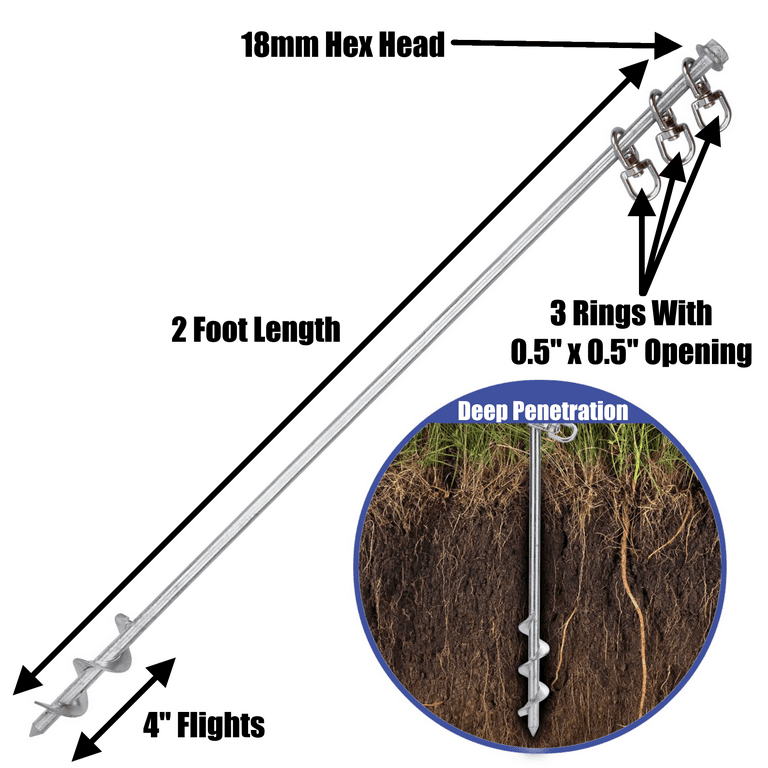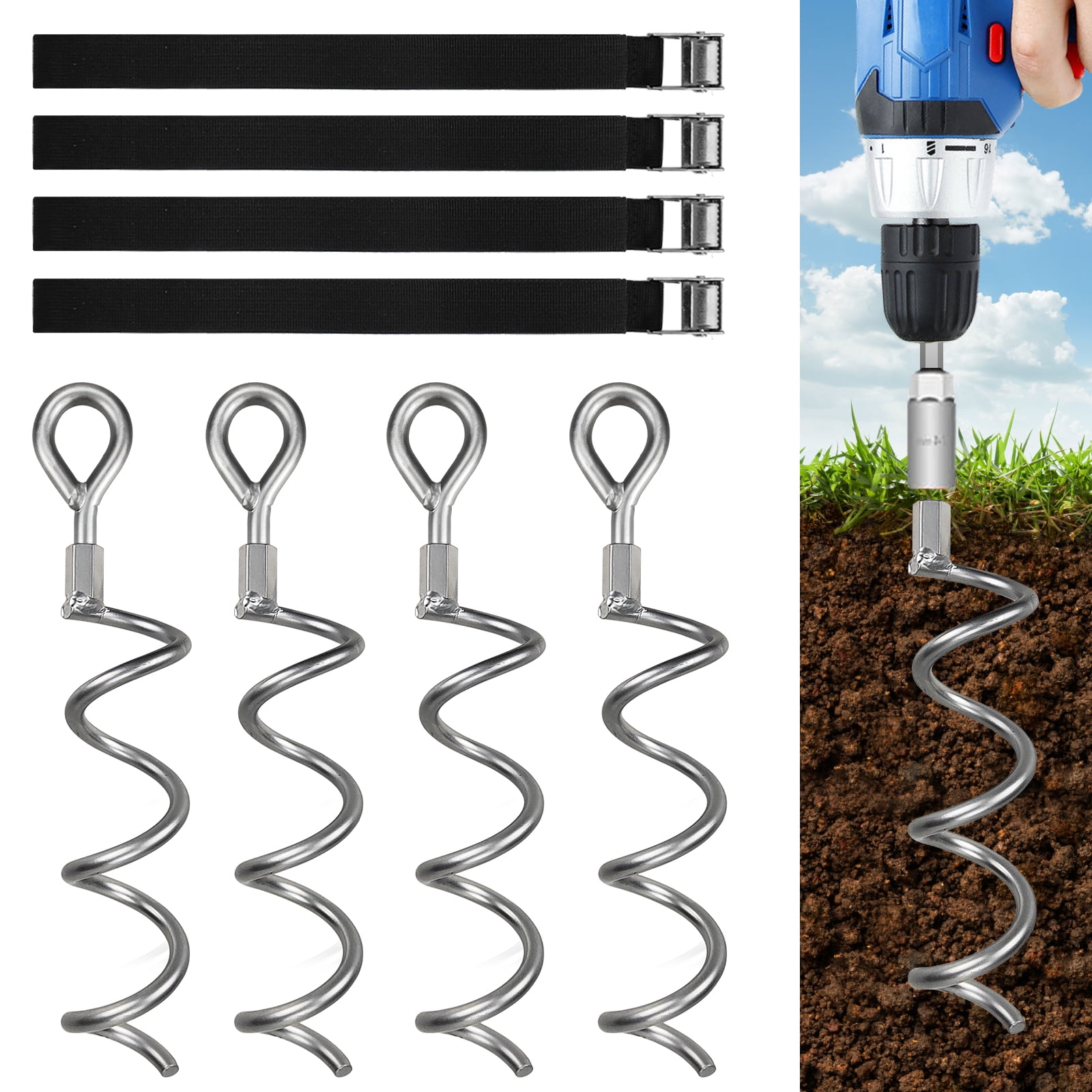Check Out the Various Kinds Of Ground Support for Your Next Task
When embarking on a construction or landscaping project, comprehending the different kinds of ground anchors offered is vital to making sure both security and resilience (Ground Anchor). From auger anchors, which master diverse soil conditions, to risk supports created for short-lived setups, the alternatives are many. Furthermore, concrete and screw supports existing unique advantages in specific scenarios, while deadman supports are tailored for applications requiring resistance to side pressures. The choice of a suitable anchor kind can considerably affect the overall success of your task, triggering more expedition into their particular advantages and applications.

Auger Anchors
Auger supports are a preferred option in various construction and landscape design tasks due to their one-of-a-kind layout and efficient anchoring abilities. These anchors are composed of a helical screw-like shaft that is driven into the ground, permitting for a stable and safe hold. The spiral layout facilitates simple setup and makes best use of resistance against side pressures, making auger supports particularly effective in applications such as fence, short-term structures, and erosion control.
The installment procedure of auger anchors is relatively straightforward. They can be by hand or mechanically mounted, depending upon the size and required deepness. This adaptability enables their usage in varied dirt problems, from sandy to clayey surfaces. Additionally, auger supports can be quickly removed and reused, which contributes to their cost-effectiveness and sustainability.
Among the substantial advantages of auger supports is their capability to distribute loads uniformly across the bordering dirt, lowering the danger of soil disruption and minimizing ecological influence. Additionally, they are much less susceptible to loosening or heaving gradually contrasted to standard securing techniques. Auger supports are an exceptional choice for projects calling for resilient and trustworthy anchoring services.

Stake Anchors
When it pertains to protecting structures in a variety of outdoor applications, stake anchors offer a reliable and uncomplicated option. These anchors are usually built from sturdy products such as steel or light weight aluminum, designed to withstand ecological stress and anxieties while providing optimal stability. Their straightforward layout permits fast installment, making them a suitable option for momentary or permanent anchoring demands.
Risk supports are specifically useful in securing outdoors tents, canopies, and various other light-weight frameworks versus wind and climate. They operate by being driven into the ground at an angle, producing a solid hold that stands up to pull-out pressures - Ground Anchor. The effectiveness of stake anchors depends upon a number of variables, including soil type, moisture web content, and the angle of installation
For included safety and security, many risk anchors come with add-on points for straps or ropes, permitting for tension changes as essential. In applications such as landscape design or building and construction, they can properly support devices or structures on unequal surface. Overall, stake supports supply a versatile and cost-effective remedy for safeguarding different outdoor setups, making them a preferred selection for professionals and DIY enthusiasts alike.
Concrete Anchors
Concrete supports supply a durable option for safeguarding structures to concrete surfaces, guaranteeing stability and safety and security in various applications. These supports are crucial for jobs varying from domestic buildings to large-scale industrial setups. They come in different types, including expansion supports, adhesive supports, and undercut supports, each created for specific tons needs and ecological conditions.
When installed,Growth supports depend on mechanical mechanisms to grip the concrete. They are perfect for tool to sturdy applications. Adhesive supports utilize high-strength epoxy or resin to bond the anchor to the concrete, offering premium load-bearing capabilities, particularly in split concrete circumstances. Undercut supports produce an one-of-a-kind shape within the concrete, providing visit extraordinary holding power, specifically in applications where tensile loads prevail.
Choosing the proper concrete anchor involves thinking about aspects such as the weight of the tons, the problem of the concrete, and environmental conditions. Appropriate installation strategies are essential to make sure ideal efficiency and dependability. When implemented appropriately, concrete anchors dramatically boost the architectural stability of various projects, making them vital in modern-day building techniques. Comprehending the specific demands of your job will aid in choosing the best type of concrete support for the job.
Screw Anchors

Screw supports are a versatile fastening service that can be properly straight from the source employed in a range of applications where traditional concrete anchors may not be enough. These supports include a helical style that enables them to be quickly driven into the ground, making them optimal for use in soil and various other substrates. Their unique framework supplies outstanding holding power and resistance to pull-out forces, making them appropriate for countless tasks, from landscape design to structural support.
One of the key benefits of screw anchors is their convenience of installment. They need marginal equipment and can usually be set up without the need for excavation, which saves both time and labor prices. In addition, screw supports can be removed and recycled, providing a lasting option for temporary applications.
Screw supports are specifically valuable in areas where soil problems are testing, such as sandy or loose soils. Their capability to be set up at differing midsts enables personalization based upon specific project needs. In general, screw anchors provide a trusted and efficient anchoring approach, making them an exceptional selection for professionals and designers seeking effective solutions for their tasks.
Deadman Anchors
Deadman supports offer as a durable option for supporting structures in tough conditions, especially where typical securing methods may fail. These supports are composed of huge, heavy objects hidden underground, which produce resistance against lateral forces. The layout normally includes a horizontal element, such as a block of concrete additional info or a steel plate, hidden in the dirt, to which wires or straps are affixed.
The performance of deadman supports depends on their capacity to distribute tons over a larger location, lowering the risk of failure in unsteady dirt problems. They are especially beneficial in applications such as preserving walls, momentary frameworks, and slope stabilization, where dirt motion can endanger the honesty of the framework.
Installation of deadman supports calls for careful planning to ensure they are positioned at the proper depth and positioning, optimizing their load-bearing capacity. While they may need even more labor and product than lightweight supports, their integrity in unfavorable problems makes them invaluable for lasting tasks. Furthermore, deadman anchors are flexible and can be adapted to different applications, making them a best selection for designers facing distinct difficulties in their jobs.
Final Thought
In summary, picking the proper kind of ground support is crucial for making certain security and security in numerous projects. Auger supports succeed in varied soil conditions, while stake anchors match momentary applications. For concrete surface areas, expansion and glue anchors give reputable options, and screw anchors provide adaptability in tough terrains. Deadman anchors are especially effective in standing up to lateral pressures for preserving walls. Mindful consideration of these options will certainly improve project end results and structural integrity.
In addition, concrete and screw supports existing one-of-a-kind advantages in certain circumstances, while deadman anchors are tailored for applications requiring resistance to lateral forces - Ground Anchor.Auger anchors are a preferred choice in different building and construction and landscape design jobs due to their one-of-a-kind design and efficient anchoring capacities. They come in various kinds, including expansion anchors, sticky anchors, and undercut supports, each made for details load demands and environmental conditions
Sticky anchors use high-strength epoxy or resin to bond the support to the concrete, offering exceptional load-bearing capacities, especially in fractured concrete situations. On the whole, screw supports give a trusted and efficient securing technique, making them a superb selection for designers and specialists looking for effective remedies for their jobs.